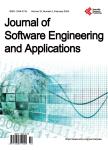版权所有:内蒙古大学图书馆 技术提供:维普资讯• 智图
内蒙古自治区呼和浩特市赛罕区大学西街235号 邮编: 010021

作者机构:Graduate School in Electrical Engineering&Industrial Computer Science(CPGEI)Federal University of Technology of Paraná(UTFPR)CuritibaBrazil Graduate School of Applied Computing(PPGCA)Federal University of Technology of Paraná(UTFPR)CuritibaBrazil.
出 版 物:《Journal of Software Engineering and Applications》 (软件工程与应用(英文))
年 卷 期:2012年第5卷第6期
页 面:402-416页
学科分类:1002[医学-临床医学] 100214[医学-肿瘤学] 10[医学]
基 金:supported by CAPES Foundation(Brazil)
主 题:Notification Oriented Paradigm Notification Oriented Inference NOP and IP Comparison
摘 要:This paper presents a new programming paradigm named Notification Oriented Paradigm (NOP) and analyses performance aspects of NOP programs by means of an experiment. NOP provides a new manner to conceive, structure, and execute software, which allows better performance, causal-knowledge organization, and entity decoupling than standard solutions based upon current paradigms. These paradigms are essentially Imperative Paradigm (IP) and Declarative Paradigm (DP). In short, DP solutions are considered easier to use than IP solutions thanks to the concept of high-level programming. However, they are considered slower to execute and lesser flexible to program than IP. Anyway, both paradigms present similar drawbacks like causal-evaluation redundancies and strongly coupled entities, which decrease software performance and processing distribution feasibility. These problems exist due to an orientation to monolithic inference mechanism based upon sequential evaluation by means of searches over passive computational entities. NOP proposes another manner to structure software and make its inferences, which is based upon small, smart, and decoupled collaborative entities whose interaction happen by means of precise notifications. This paper discusses NOP as a paradigm and presents certain comparison of NOP against IP. Actually, performance is evaluated by means of IP and NOP programs with respect to a same application, which allow demonstrating NOP superiority.